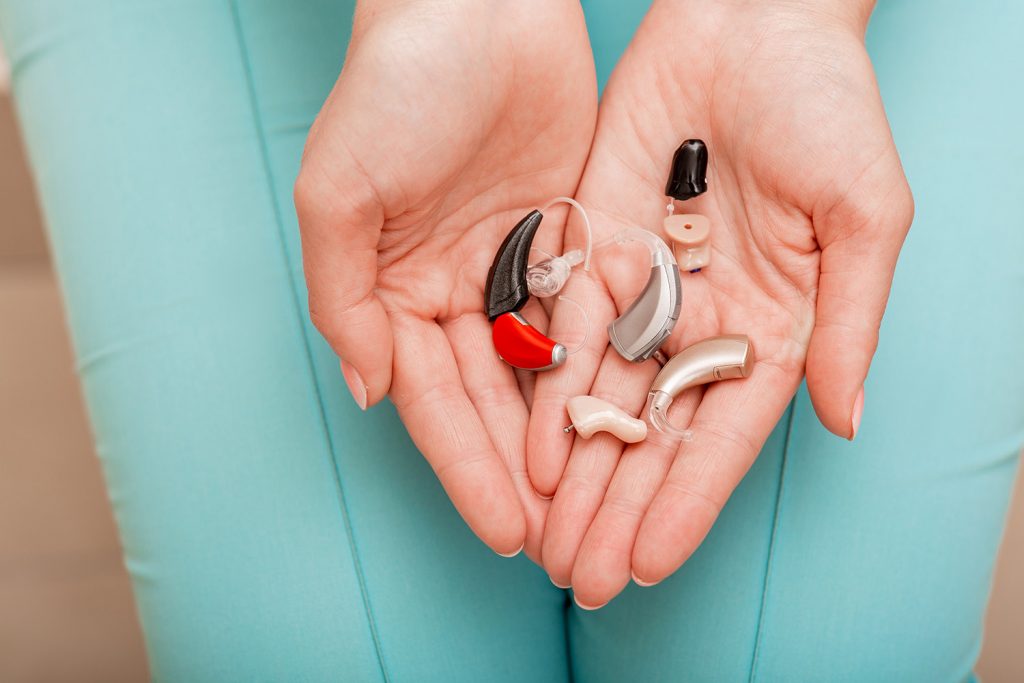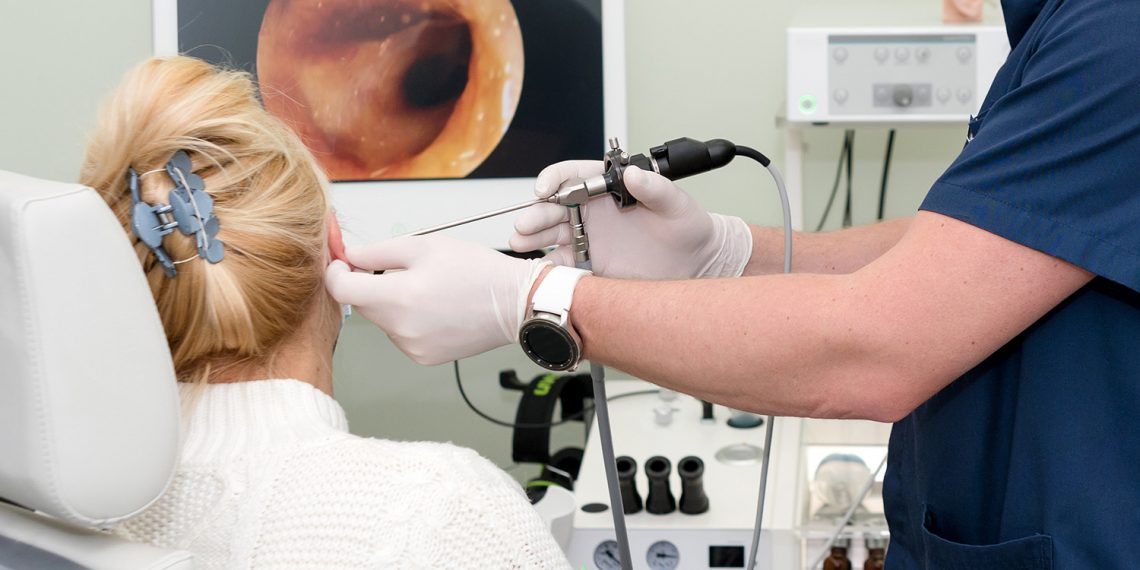Sensorineural hearing loss (SNHL) is a type of hearing impairment caused by damage to the inner ear (cochlea) or the auditory nerve. There is no cure for SNHL, but there are several treatment options available to help improve the ability to hear and communicate.
Hearing aids: Hearing aids amplify sound and can be tailored to an individual’s specific type and degree of hearing loss. They come in various styles, including behind-the-ear, in-the-ear, in-the-canal, and completely-in-canal.
Cochlear implants: Cochlear implants are surgically implanted devices for individuals with severe or profound SNHL who do not benefit from hearing aids. The implant consists of a microphone, speech processor, and electrodes that stimulate the auditory nerve directly.
Assistive listening devices: Assistive listening devices (ALD) are electronic devices that help to enhance sound in specific situations, such as watching TV, using the phone, or in large crowds. Examples include personal FM systems, induction loop systems, and alerting devices.
Auditory training and rehabilitation: This includes speech and language therapy, lip-reading classes, and sound therapy. It can help individuals with SNHL improve their ability to understand speech and enhance communication skills.
Tinnitus management: Tinnitus is a common symptom of SNHL and can be managed through various methods, including sound therapy, cognitive-behavioral therapy, and tinnitus retraining therapy.
Surgery: Stapedectomy and cochlear implantation are two surgical options for treating SNHL. Stapedectomy involves repairing or replacing the stapes bone in the middle ear to improve sound transmission. Cochlear implantation involves surgical placement of a device that stimulates the auditory nerve directly.
Medications: Some medications can help to relieve symptoms of SNHL, including pain, tinnitus, and vertigo.
The best treatment option for SNHL will depend on the individual’s specific type and degree of hearing loss, as well as their lifestyle and personal preferences. It’s essential to consult an audiologist or otologist for an accurate diagnosis and to discuss the most appropriate treatment options.
While SNHL cannot be cured, there are several treatment options available to help improve the ability to hear and communicate. These include hearing aids, cochlear implants, assistive listening devices, auditory training and rehabilitation, tinnitus management, surgery, and medications.
Why Are Hearing Aids A Great Solution For Sensorineural Hearing Loss?

Hearing aids are a great solution for sensorineural hearing loss (SNHL) because they are designed to amplify sound and improve an individual’s ability to hear and communicate effectively. SNHL is a type of hearing impairment caused by damage to the inner ear or auditory nerve, resulting in difficulty hearing sounds, particularly in noisy environments.
Hearing aids work by collecting sound through a microphone, amplifying it, and delivering it directly into the ear. The amplification of sound can help to overcome the damage caused by SNHL and improve an individual’s ability to hear and understand speech. Today, hearing aids are available in a variety of styles, including behind-the-ear, in-the-ear, in-the-canal, and completely-in-canal, to suit an individual’s specific needs and preferences.
In addition to improving hearing, modern hearing aids are equipped with advanced features that can enhance sound quality and enhance the overall listening experience. For example, some hearing aids have directional microphones that focus on sounds coming from the front, reducing background noise and improving speech understanding. Noise reduction algorithms are also available in many hearing aids, which help to reduce distracting background noise.
Another advantage of hearing aids is their versatility. They can be customized to an individual’s specific type and degree of hearing loss, as well as their lifestyle and listening needs. Hearing aids are also designed to be comfortable and discreet, making them an attractive solution for individuals who are concerned about their appearance.
In addition to the technical benefits, hearing aids also offer psychological and social benefits. Improved hearing can increase self-esteem, reduce feelings of isolation and depression, and improve relationships with friends, family, and colleagues. Hearing aids can also enhance an individual’s quality of life by allowing them to participate in activities they may have previously avoided, such as attending concerts or participating in group conversations.
Furthermore, hearing aids are generally a cost-effective solution for SNHL compared to other treatments, such as cochlear implants. They are also relatively low maintenance, with the need for regular check-ups and battery replacements.
Hearing aids are a great solution for SNHL because they are designed to improve an individual’s ability to hear and communicate effectively. They are available in a variety of styles and equipped with advanced features that enhance sound quality and reduce background noise. Hearing aids are also versatile, customizable, comfortable, and discreet, making them an attractive solution for individuals who are concerned about their appearance. They also offer psychological and social benefits and are generally cost-effective compared to other treatments for SNHL.
What Type of Hearing Aid is Right For You?

Determining the right type of hearing aid for you depends on several factors, including the severity of your hearing loss, your lifestyle, and your personal preferences. Here is a brief overview of the different types of hearing aids available:
Behind-the-Ear (BTE) Hearing Aids: BTE hearing aids are the most commonly used type of hearing aid. They consist of a small plastic casing that sits behind the ear and a plastic earmold that fits inside the ear canal. BTE hearing aids are suitable for individuals with mild to severe hearing loss and are particularly useful for those with hearing loss in both ears. They are also ideal for individuals who have difficulty handling small devices.
In-the-Ear (ITE) Hearing Aids: ITE hearing aids are custom-made to fit the specific shape of an individual’s ear. They are suitable for individuals with mild to moderate hearing loss and are easy to handle. They are also available in a full-shell design, which covers the entire outer ear, or a half-shell design, which only covers the bottom part of the ear.
In-the-Canal (ITC) Hearing Aids: ITC hearing aids are custom-made to fit inside the ear canal. They are suitable for individuals with mild to moderate hearing loss and are discreet, making them a popular choice for individuals who are concerned about their appearance. ITC hearing aids are also easy to handle and provide good sound quality.
Completely-in-Canal (CIC) Hearing Aids: CIC hearing aids are custom-made to fit deeply into the ear canal, making them the most discreet type of hearing aid available. They are suitable for individuals with mild to moderate hearing loss and provide good sound quality. However, they can be difficult to handle, particularly for individuals with dexterity issues.
Receiver-in-Canal (RIC) Hearing Aids: RIC hearing aids are similar to BTE hearing aids, but the speaker (receiver) is positioned inside the ear canal rather than behind the ear. This design makes them more discreet than BTE hearing aids and provides improved sound quality. RIC hearing aids are suitable for individuals with mild to severe hearing loss.
The best type of hearing aid for you will depend on several factors, including the severity of your hearing loss, your lifestyle, and your personal preferences. It is important to consult an audiologist to determine the most appropriate type of hearing aid for your individual needs.
There are several types of hearing aids available, including Behind-the-Ear (BTE), In-the-Ear (ITE), In-the-Canal (ITC), Completely-in-Canal (CIC), and Receiver-in-Canal (RIC) hearing aids. The best type of hearing aid for you will depend on several factors, including the severity of your hearing loss, your lifestyle, and your personal preferences. It is essential to consult an audiologist to determine the most appropriate type of hearing aid for your individual needs.




